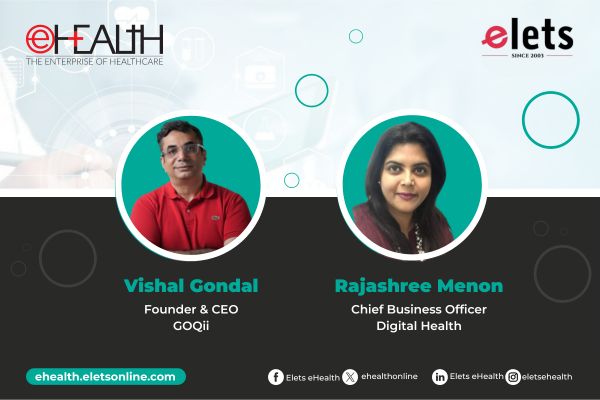
The field of pathology for over a century has been relying heavily on the manually handled microscope by the pathologists to draw diagnosis. To date, the microscope remains the gold standard in a majority of pathological labs. However, the advent of technology has scratched the surface, leaving a long-lasting mark on the field of pathology to revolutionize in a way that was seldom thought about. Yes, digitization of pathology is up and kicking and has found grounds as the primary means of inferring diagnosis of sample slides for precision diagnosis and surfacing several more vital pieces of information which might go unnoticed in the primitive microscope dependence.
From recording the sample’s details through precision imaging technology; studying the sample in specialized devices that aid 3-D access to the sample which helps to note down accurate readings; maintaining records of the patient on the cloud repository for any future reference from anywhere in the world, the pathology space has seen revolutionary changes with technology stepping in.

Imaging technology, though quite nascent in the Asian markets, especially in India, is bound to usher in an array of advantages as compared to the age-old microscope study of slides.

Studying cancer has become streamlined and steadfast with genomic sciences. The application of genomic science assures early diagnosis and marks the stage accurately. Aiding in recognizing molecular changes in the tumor, molecular imaging has thrived in this space. In the pathology space, to assess the sample for cancer efficiently, genomic-based molecular techniques have certainly paved the way. Reportedly, techniques like polymerase chain reaction (PCR), fluorescence in situ hybridization (FISH), array comparative genomic hybridization (aCGH), and DNA sequencing help surface chromosomal abnormalities.

Using imaging like fluorescent probes and high-resolution scanners, these technologies aid the pathologist in enhancing the results which would have been wary in the case of a microscope alone. Imaging hence makes the diagnostic more comprehensive and detailed for the physician who will evaluate the results and guide on the future procedures accordingly.

The foremost advantage of imaging technology for its prudence is its ability to provide various angles and high resolution to help the pathologists study the sample accurately, and, in instances, even help them to surface observations of indicators that can develop into rare diseases.
Digital imaging is bringing a notable change to the traditional diagnostic process. A large population of India still resides in rural regions with nominal medical infrastructure like a lack of organized pathological services in their vicinity. Through the installation of scanners in the healthcare systems there, the images can be analyzed by a pathologist remotely from anywhere across the country. The process hence becomes streamlined and steadfast, with immediate transfer of information, connecting the whole.
A similar case study in Canada stated that pathologists’ unavailability in rural areas is a persistent shortcoming. To address it, one hospital went on to invest in scanners to operate remotely, hence enabling the pathologists placed anywhere in the country to access the cases virtually. The case study enlisted an array of benefits of carrying out this process including taking away the burden from valuable resources like logistics including freezing services, transportation of samples from the village to pathology centers in the nearest city, etc. Moreover, multiple hospitals conducted the studies in synchronization to avert error and bring consistent results to the specimens studied. This helped save critical costs while providing precision pathology services.
Moreover, cloud technology enables pathology centers to store large digital images and make them available globally to everyone while ensuring protected access. Image viewing software combined with social networking tools can help equilibrium in demand and supply of virtual pathological services across the globe. Providing consulting opportunities for pathologists while ensuring precision care to the patients globally, can become a win-win situation for all. Reportedly, some American companies and institutions like the University of Pittsburgh, are having contracts with firms in China and other countries to communicate and analyze cases from US-based pathologists.
Finally, let us understand how running through the whole procedure of imaging technology becomes indestructible in the case of science of pathology.
Let’s say that the imaging software is connected with the laboratory information system (LIS). This will help create a repository of the patient and their samples’ data to be managed, communicated, and stored by specific people with access grants. Let’s take for example – a mouth cancer patient’s sample reaches a local pathologist in Mumbai. Here, the sample’s slide is created, stained, and scanned. To carry out additional testing, the LIS electronically places an order. The receiving laboratory in Delhi conducts additional molecular testing and scans the results to be reviewed by the pathologist. The pathologist still logged in on his LIS, captures the additional testing, and populates the results into a complete report with an image of the FISH results. The report is then emailed to the referring physician, who might be at home while accessing the email via his smartphone. Getting redirected to the website, he can access the report on the LIS. After the assessment, he can inform the patient about the further medical procedures in real-time, without requiring them to meet in person. This data remains stored for future reference of the patient’s medical history by any other doctor in another country, making imaging technology indestructible in the science of pathology.
– Views expressed by Pankaj Rathod, Founder, Genesis Healthcare
Be a part of Elets Collaborative Initiatives. Join Us for Upcoming Events and explore business opportunities. Like us on Facebook , connect with us on LinkedIn and follow us on Twitter , Instagram.
"Exciting news! Elets technomedia is now on WhatsApp Channels Subscribe today by clicking the link and stay updated with the latest insights!" Click here!
















